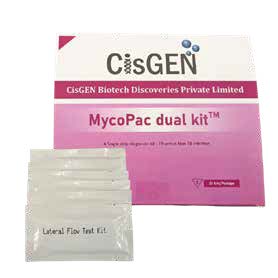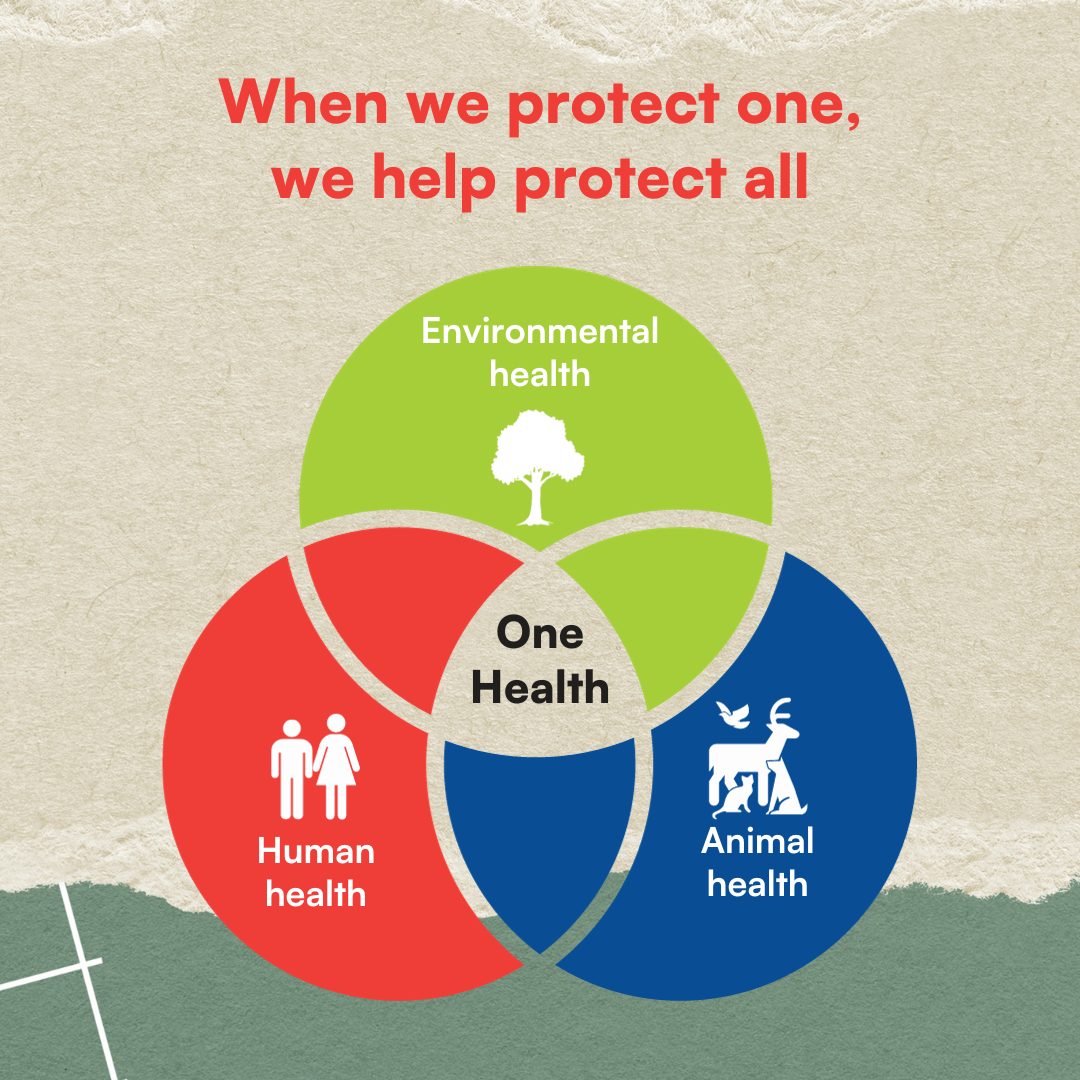

Zoonosis is an infection transmissible from animals to humans naturally. The majority of zoonoses occur where there is direct close contact between humans and relatively abundant animal species such as companion animals and those in the animal-based food system. On the other hand, indirect zoonotic infections often occur through meat and animal product consumption. This is also true for zoonotic tuberculosis (zTB), which adds to the vast existing Tuberculosis (TB) burden around the globe. TB-causing organisms M. tuberculosissensu stricto and M. africanum cause majority of the zoonotic TB infections in humans. In addition, several other organisms from the M. tuberculosis complex (MTBC) that are present in animals and the environment can cause zTB. These include M. canetti, M. bovis, M. caprae, M. microti, M. pinnipedii, M. mungi, and M. orygis.
The 2020 World Health Organization (WHO) Global Tuberculosis Report estimates that in 2019, nearly 10 million people developed active TB disease, of which approximately 1.2 million died. Of these 10 million, nearly 140,000 are estimated to be new cases of zTB, with an 8% mortality rate[1]. Although the prevalence statistics of zTB in India are not systematically available, it has been estimated that M. bovis (a classical TB pathogen responsible for causing infection in cattle) causes ~10% of the total human TB cases in developing countries[2].
India has multiple risk factors for zTB including high human-animal density, close and frequent physical contact with infected animals, inadequate disease control measures, and consumption of unpasteurized milk and milk products[3]. The risk of zTB transmission becomes much more profound when considering the current prevalence of TB in cattle in India. Around 21.8 million cattle are affected by TB in India, making it the largest animal reservoir for TB2. Importantly, an even more troubling possibility in some settings is the prospect of animals serving as a vehicle of transmission for drug-resistant M. tuberculosis (DR-TB). Animals are now becoming a reservoir for DR-TB as a result of reverse zoonosis i.e., the transmission of drug-resistant TB infection from humans to animals. A recent study identified that M. tuberculosis was found to be more prevalent in cattle than M. bovis (the common pathogen for bovine TB), likely due to spillover from humans in TB-endemic areas[3],[4]. MDR-TB strains acquiring an animal reservoir could pose a grave future risk to human TB control, and further fuel the problem of antimicrobial resistance.
Currently, TB in live animals is mainly diagnosed using the intradermal tuberculin skin test (TST) that detects delayed hypersensitivity response to tuberculin. Culture or molecular techniques such as PCR and whole genome sequencing are used in advanced testing labs for microbiological confirmation of the TB‐causing agent. However, these tests have limited availability, are time-consuming and are not routinely performed in high zTB burden countries due to their high cost, complex logistics, the need for biocontainment, and the inaccessibility of laboratory expertise in remote areas[5]. Further, diagnostic services for accurate identification and speciation are not universally available. This is one of the main reasons why zTB burden and mortality estimates are primarily based on M. bovis for which the tests are more widely available. The statistics essentially ignore the contribution of other MTBC species such as M.orygis. The lack of species-wise prevalence data has also led to the inexistence of a systematic surveillance program and limited funds allocation for zTB disease eradication[6].

To tackle the zTB diagnosis challenge, it is critical to develop a rapid, cost-effective, point-of-care (POC) test. Serological assays offer an attractive diagnostic option as they are simple, inexpensive, relatively non-invasive, and do not require a bio-containment facility. Rapid POC testing could assist veterinarians and farmers in quickly diagnosing TB, so that herd transmission can be swiftly checked and infected animals can be rapidly isolated5. Innovations like IHF-supported CisGEN’s zTB detection kit, which accurately detects zTB in 10 minutes can serve the purpose and provide a cost-effective solution to the problem[7].
Despite the pressing need for improved diagnostic services for detecting zTB in India, the market for such novel diagnostic solutions faces significant challenges that hinder investment and innovation in this area. One of the primary reasons for this reduced investment in zTB diagnostics is the lack of a clear and profitable market. The majority of zTB cases occur in resource-constrained settings, often in rural and remote areas where healthcare infrastructure is inadequate[8]. In such regions, farmers and veterinarians may not have the financial capacity to invest in sophisticated diagnostic tools or pay for expensive laboratory tests. As a result, the potential market for zTB diagnostic products remains limited, discouraging innovators from dedicating resources to the development of zTB diagnostics. Additionally, going through regulatory challenges, extensive validation, and field testing for a product that has a limited market can deter companies from pursuing zTB diagnostic innovations. Moreover, the stringent regulatory requirements and the necessity to ensure diagnostic accuracy in a variety of environmental conditions can substantially increase the time and cost involved in bringing a new zTB diagnostic tool to the market[9].
Addressing these challenges and fostering a conducive environment by developing innovative financing mechanisms for research and development is essential to accelerate progress in developing reliable and accessible diagnostic solutions for zTB in India and beyond. Such advancements will not only be crucial for TB control but also for safeguarding public health and livelihoods of those dependent on livestock and agriculture.
To tackle zTB, preventing the transmission of infection from animals to humans and vice versa is the primary need. However, zTB persists and remains endemic in India due to the lack of disease control programs, the associated economic costs and the social barriers to testing and culling strategies[10],[11]. This absence of a systematic zTB eradication program has resulted in a poorly quantified prevalence of mycobacterial infections in the Indian livestock. Novel point-of-care diagnostics, good caliber surveillance programmes, and improved reporting frameworks will help the country precisely screen for zTB in animal populations, helping to realize the actual burden of the disease, a first step towards curbing zTB[12].

The call for a One Health Approach by the G20 Buenos Aires summit in 2018 provided the right opportunity to evoke and put a special effort into addressing the effect of zoonotic and reverse zoonotic TB on the welfare of humans as well as animals10. A One Health approach highlights the interconnectedness of human, animal, and environmental health, and the importance of working together to protect the health of all. However, an effective One Health program requires strong political will, evidence-based policy innovations, clearly defined agency duties and tasks, coordination mechanisms at all levels, and an open information exchange culture.

Coordination between the veterinary, clinical, epidemiological, and public health sectors is necessary to design and structure TB eradication programs that integrate both the human and animal fronts. This would lead to better One Health practices that will help eradicate TB. Timely reports of infected herds and immediate steps to prevent transmission could be achieved through amicable and synergistic actions taken by these sectors. Sharing knowledge regarding the occurrence, distribution, genetic diversity, extent and mode of interspecies transmission of zTB is very important.
The formidable “End TB Strategy” by the World Health Organization (WHO) and the National Tuberculosis Elimination Program (NTEP) by the Government of India will achieve its goals only when all routes of transmission, including zoonosis and reverse zoonosis are taken into consideration.
Saurabh Mamtani is Senior Associate at India Health Fund. He is a dedicated public health professional with a diverse background in health economics and pharmacy. He holds an MSc in Public Health from the London School of Hygiene and Tropical Medicine and a Doctor of Pharmacy (PharmD) from India. His work spans diverse areas, including healthcare, consulting, project management, and research, where he has consistently contributed to evidence-based decision-making for positive social impact. Saurabh is driven by a profound sense of purpose to serve humanity, tackling intricate social challenges, and advocating for practical solutions on a global scale.
Views expressed are personal
This blog was published on the occasion of One Health Day (3rd November 2023).
https://www.who.int/publications/i/item/9789240013131 [Internet]. WHO Global Tuberculosis Report.